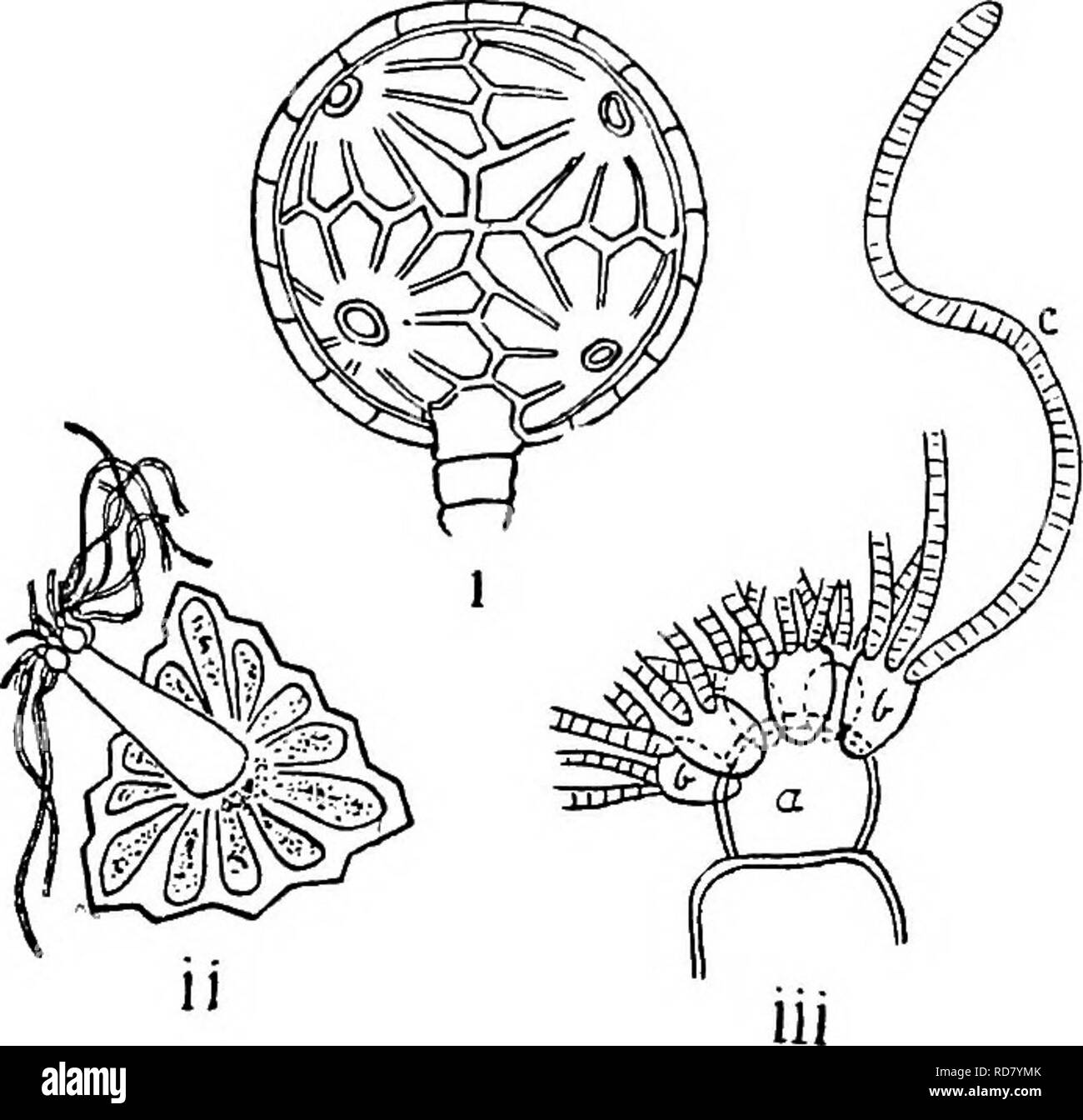. The British Charophyta. Characeae. 48 BRITISH CHAEOPHTTA. The chlorophyll-granules become yellowish-orange to red as the antheridium matures. The foot-stalk (Fig. 18 6), styled the flask-cell, is more or less flask-shaped, the narrower end projecting far into the interior of the antheridium. In the Nitellese, between the flask-cell and the node-cell, an extra cell (Fig. 18 c) is present.. Fio. 19.—Mature antheridium (after Prosper), i. Chara hispida. ii, iii. Chara tomentosa. i. General exterior view. ii. Interior view of single plate or shield with manubrium attached, iii. Apex of manubrium

Image details
Contributor:
The Book Worm / Alamy Stock PhotoImage ID:
RD7YMKFile size:
7.1 MB (259.2 KB Compressed download)Releases:
Model - no | Property - noDo I need a release?Dimensions:
1609 x 1553 px | 27.2 x 26.3 cm | 10.7 x 10.4 inches | 150dpiMore information:
This image is a public domain image, which means either that copyright has expired in the image or the copyright holder has waived their copyright. Alamy charges you a fee for access to the high resolution copy of the image.
This image could have imperfections as it’s either historical or reportage.
. The British Charophyta. Characeae. 48 BRITISH CHAEOPHTTA. The chlorophyll-granules become yellowish-orange to red as the antheridium matures. The foot-stalk (Fig. 18 6), styled the flask-cell, is more or less flask-shaped, the narrower end projecting far into the interior of the antheridium. In the Nitellese, between the flask-cell and the node-cell, an extra cell (Fig. 18 c) is present.. Fio. 19.—Mature antheridium (after Prosper), i. Chara hispida. ii, iii. Chara tomentosa. i. General exterior view. ii. Interior view of single plate or shield with manubrium attached, iii. Apex of manubrium with primary (a) and secondary (b) head-cells and filaments (c) containing antherozoids. From the centre of each of the plates on its inner side an elongated cell, called the manubrium, projects inwards towards the centre of the antheridium (Fig. 19 ii). The manubrium as well as the flask- cell contain chlorophyll. At the distal end of each manubrium there is a nearly globular colourless cell, styled the capitulum or head-cell (Fig. 19 iii a). From this head-cell proceed about four to six subglobular or elongated cells, the secondary capitula (b), each of which gives rise to a variable number (usually two. Please note that these images are extracted from scanned page images that may have been digitally enhanced for readability - coloration and appearance of these illustrations may not perfectly resemble the original work.. Groves, James; Bullock-Webster, George Russell, 1858- joint author. London, The Ray society